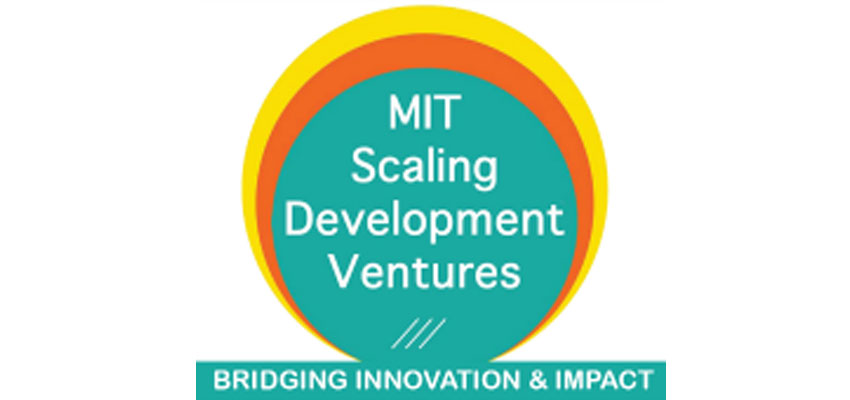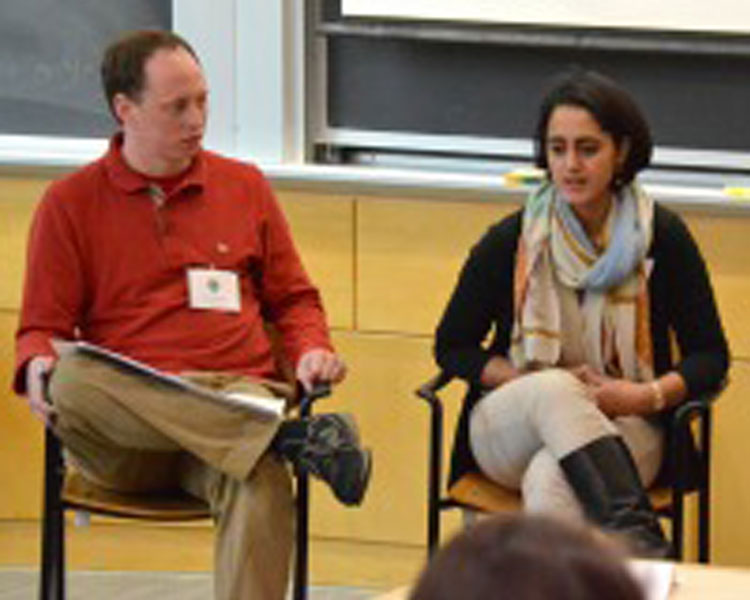
The following is one of a series of blogs about presentations, workshops, and panels that were part of the 2015 MIT Scaling Development Ventures conference.
-----------------------------
Financing +
Financing is not just about giving loans. In the development field, financing is a tool to strengthen a product offering, an opportunity to build customer capacity, and a foundation on which to build additional services.
In a panel at the MIT Scaling Development Ventures conference titled Bridging the Affordability Gap: Increasing Access to Products & Services through Financing, Scott Overdyke, Senior Programs & Planning Manager for Root Capital, spoke about how they offer technical assistance alongside financing so that their clients can better manage their finances overall, thus avoiding the vicious cycle of debt.
Zehra Ali, from Ghonsla, offers financing to her customers who are buying insulation for their homes; this strengthens her product offering and enables her to reach a broader customer base, thus providing scale for her business and increased impact to the community.
What I found particularly interesting was that Ghonsla had approached a local microfinance institution to consider including their product in the MFI's portfolio of offerings; they did not accept. In response, Ghonsla brought the financing in-house. This led to the complete integration of their value chain – marketing, sales, installation, and loan management – which according to Zehra is responsible for their near 100 percent loan recovery rate. The addition of the financing to her current operations actually strengthened the business overall.
Modified terms
Would you be interested if I told you there was a way to assess credit worthiness that was customizable, holistic, required no literacy, could accommodate qualitative inputs, and was transmittable via all means of communication? It's verbal personal reference. Elizabeth Friend from The Small-Scale Sustainable Infrastructure Development Fund (S3IDF) told of how they find implementing organizations based on the recommendations of other local partners, as well as their partners’ partners.
Root Capital invests in rural smallholder coffee co-ops with confidence. How do they do so without a "credit rating" on which to rely? They are replacing credit ratings with something that is more socially constructed – smallholder farmers vet their peers and have the incentive to build a strong co-op. The reliance on each other's word may be "old fashioned," but this tried-and-true "credit rating" that these organizations are willing to rely on enables them to more fluidly engage with partners and customers in places where typical mechanisms such as credit ratings simply cannot operate. This seems to go without saying, but in our "we-must-quantify-everything" world, these organizations are truly at the cutting edge by building a strong business model with non-traditional, organic elements that are more nimble, accessible, and effective.
Innovative product development is often claimed to only emerge from on-the-ground observation and human-centered-design (HCD), but what if we used big data and HCD to imagine products for new segments? Samantha Akins explained how the Grameen Foundation is using information to understand and identify products that users need. By leveraging data collected from everyday transactions from mobile platforms, for example, they are able to identify patterns of use and observe potential gaps in current service offerings. This provides data on what might otherwise not be observed and recorded, contributing a crucial perspective that only a birds-eye view can provide.
Slow and steady wins the race
Disruptive innovation is the buzziest of buzzwords, but it is not a silver bullet. We are obsessed with new and different things and bored with established methods that are well understood. What we already know is that in order to increase access to appropriate financing, we need to do what S3IDF and Root Capital are doing – provide incentive and re-risking structures which help the riskiest of customers to become more appealing to other lenders.
Organizations that offer partial loan guarantees are helping mainstream financiers take on a new and broader customer base; by intentionally and gradually shifting those risk profile norms, these organizations are slowly but surely moving the needle. Elizabeth Friend from S3IDF reminded us that we must engage the entire sector to reevaluate our expectations of returns and recalibrate our values. These lessons and benchmarks are emerging today, through conferences and conversations such as this panel I took part in at MIT Scaling Development Ventures – and I am pleased to be a part of the discussion.
-----------------------------
About Benji Moncivaiz
Benji Moncivaiz is a student at The Fletcher School studying the intersection of business, policy, and global development. He believes a blend of financial and social metrics can be used as the common language used to successfully initiate, manage, and conclude powerful cross-sector partnerships that can solve wicked problems.





